The Mystery Of Saint Michael's Sacred Line And The 7 Monasteries Revealed
Have you heard of a mysterious and perfect ley line that connects seven monasteries from Ireland to Israel? Let's go on an intriguing journey and discover its secret!
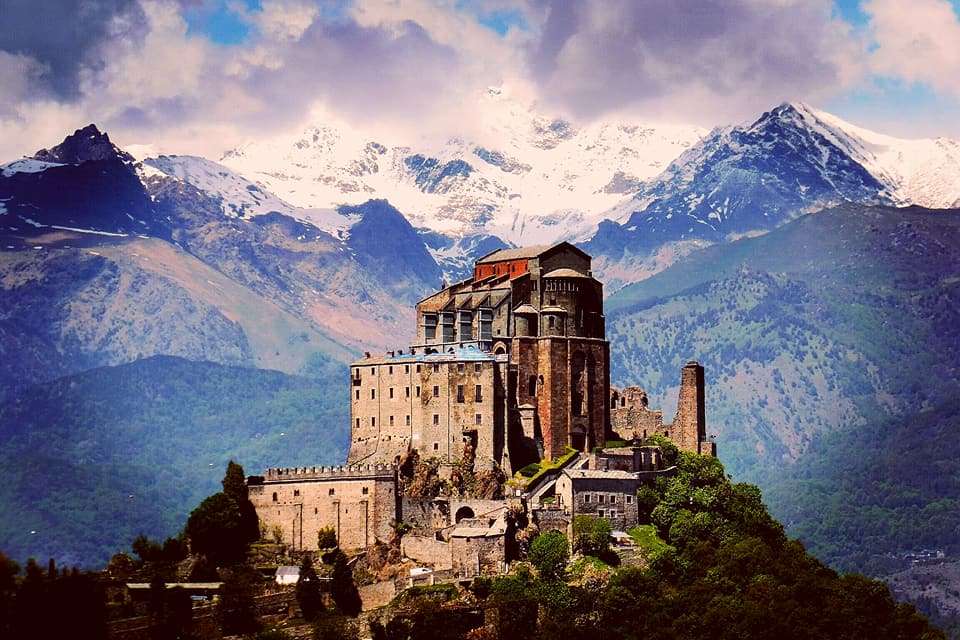
The Saint Michael's Sacred Line is a mysterious phenomenon that has puzzled historians and archaeologists for centuries.
A mysterious imaginary line links seven monasteries from Ireland to Israel. Is it just a coincidence? These seven sanctuaries are very far apart, yet they are perfectly aligned.
It is said to be a powerful spiritual energy that runs through seven monasteries in Western Europe, connecting them in a difficult way to explain. Many believe this line is a link to the divine, and those who follow it will be blessed with great spiritual power. However, the true nature of Saint Michael's Sacred Line remains a mystery, and many continue to search for answers.
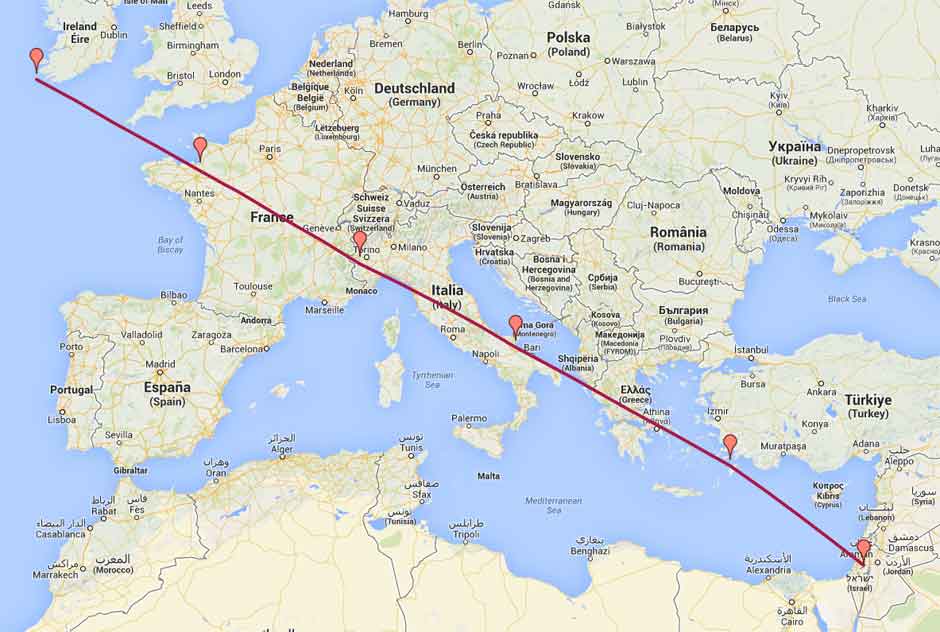
Explore this fascinating list of sanctuaries uniquely linked by a straight line, steeped in rich history and captivating legend. These sanctuaries have been revered for generations and hold significant mythological and legendary importance. Witnessing this remarkable sight is an experience that we highly recommend.
The battle cry "Quis ut Deus? Who is like unto God?" was issued by Saint Michael the Archangel at the beginning of the first war in history, which is said to continue until the end of time. No wonder this grand champion of God's cause in heaven would make an ideal patron for those devoted to His most sacred cause on Earth.
Devotion to Saint Michael was particularly strong during the Middle Ages, especially among monastic orders who saw themselves as soldiers of Christ.
It would be natural then for these spiritual "special forces" in the fight for the salvation of souls to name their monasteries and shrines after Saint Michael the Archangel. One lesser-known but significant sign of this devotion is the presence of a perfect ley line, known as the Sword of St. Michael, which connects a line of monasteries from Ireland to Israel. Exploring these monasteries and discovering the depth of devotion to Saint Michael within them is fascinating.
Skellig Michael (Ireland)
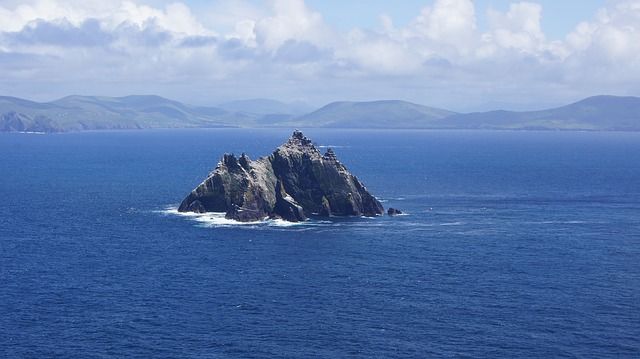
Image by Ari Kejonen from Pixabay
The first shrine to Saint Michael is Skellig Michael, a rugged and mountainous island located off the West coast of Ireland and is home to the first shrine dedicated to Saint Michael. In the VI century, Saint Fionan took up residence on the island and established a Celtic monastic community there. The monks who lived on Skellig Michael dwelled in stone huts and faced numerous challenges, including sustaining crops and herds in such a harsh environment. Yet, despite their ascetic way of life and hardships, the monks remained steadfast in their faith.
In return for their fidelity, God rewarded the small community with miracles.
As Giraldus Cambrensis, an XII-century Cambro-Norman Archdeacon in Wales, recounts, the wine used for the consecration in the Mass was constantly in full supply, despite the lack of grapes on the island. Another event that is undoubtedly due to the work of Divine Providence was that after a hundred years of Viking raids – which resulted in the death of countless monks – a hermit of Skellig Michael baptized Olaf Trygvasson, the King of Norway, who in turn brought the multitude of his subjects out of the darkness of heathenism.
Skellig Michael is also where St. Patrick waged his final battle against the serpents, expelling them from Ireland forever.
Saint Michael’s Mount (Cornwall, United Kingdom)
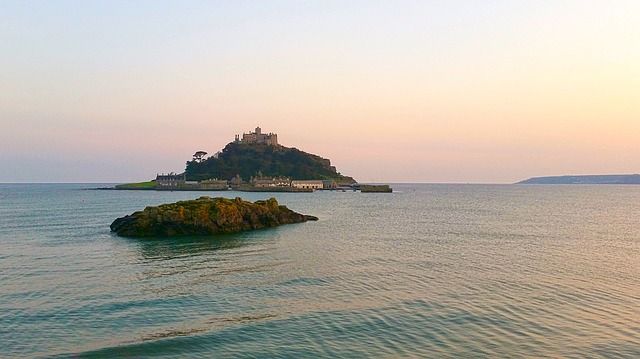
Next in line is Saint Michael's Mount, the lesser-known sister site of the famous Mont-Saint-Michel in France. Like Mont-Saint-Michel, it is on an island accessible by foot only when the tide permits.
Interestingly enough, many religious structures on the island were built by the same monks of Mont-Saint-Michel who received the island as a gift from Saint Edward the Confessor, the King of England, in the XI century.
Before any order occupied it, the island was a pilgrimage site because of Saint Michael's frequent apparitions. According to sources from the Early Medieval period, the Archangel, also the patron saint of fishermen, would guide nearby sailors to safety.
Later, the Crown seized the property and used it as an outpost against the anti-Monarchist, anti-Catholic forces of Oliver Cromwell. Today, the site can still be visited, although much of the Monastery has been assumed by secular buildings.
Mont-Saint-Michel (Normandy, France)
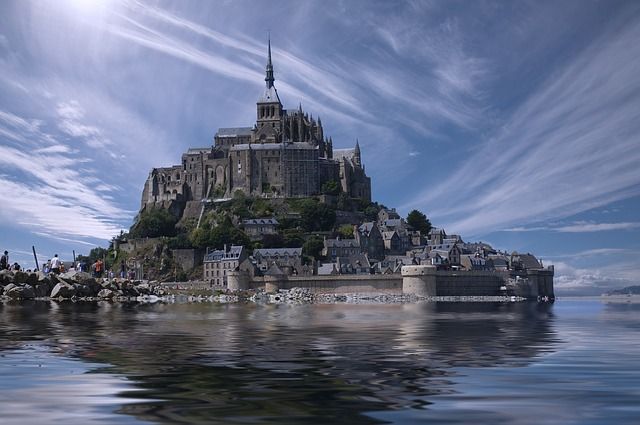
Image by Laulotte from Pixabay
Like its holy patron, Mont-Saint-Michel reflects the harmony and sacrality of the union of the religious and military spirit. Easily one of the most recognizable landmarks of Christendom, the abbey-fortress on the Norman coast of France traces its origins to the VIII century when St. Albert, bishop of Avranches, was instructed by Saint Michael in a series of visions to build an abbey on the island.
During that period, France experienced a series of attacks from the Vikings which caused great concern. To counter this new pagan threat, the Franks sought the protection of Saint Michael, their defender. Eventually, the Vikings settled in the region and adopted Catholicism as their faith. Due to their natural inclination towards military pursuits, they became devoted followers of St. Michael.
Under Abbot Hildebrand II, the plan for the structures of Mont-Saint-Michel that we recognize today began. Despite setbacks, the monumental project was finally completed in 1520.
Unfortunately, the Congregation of St. Maur was forcibly removed from the shrine by French Revolutionaries, who turned the Monastery into a political prison ironically named Mont Libre.
Sacra di San Michele (Turin, Italy)
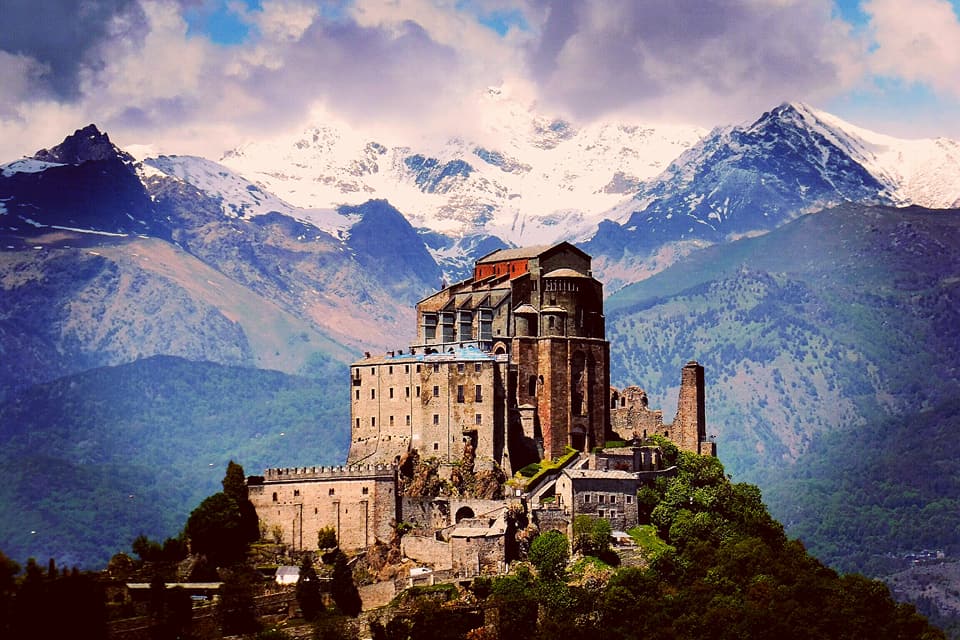
The origins of this shrine to the Archangel are steeped in history. For example, Roman Legions used the location as a base, and later, the Lombards occupied the strategic outpost.
The Catholic history of the Sacra di San Michele begins in the X century, when Saint Giovanni Vincenzo, a hermit, was commanded by Saint Michael to build a shrine. The Sacra di San Michele is perched on the top of Mount Pirchiriano. Unfortunately, however, the task of building the Monastery was almost impossible to achieve. Miraculously, however, the necessary building materials appeared precisely where the shrine stands today.
Not surprisingly, the site quickly attracted pilgrims throughout Italy and beyond, including notable visitors such as Saint Anselm, Archbishop of Canterbury, whose nephew was a monk there.

Sanctuary of Monte Sant’Angelo (Mount Gargano, Italy)
Like the other shrines, the Sanctuary of Monte Sant'Angelo sits high above the surrounding countryside.
In the V century, while Elvio Emanuele, 33rd commander of the armies of Siponto and local lord, grazed his large herd of cattle on the mountain, something unusual happened: His prized bull went missing. After a laborious search, Elvio finally found the bull at the mouth of a cave used for dark pagan practices. The nobleman fired an arrow toward the animal to get the bull to move, but the missile bounced back.
Startled, lord Elvio told the local bishop about the incident. The bishop, equally disturbed, prayed to heaven for guidance. After three days, Saint Michael appeared to the prelate and told him to build a place of Catholic worship at the cave. The bishop procrastinated.
Another miracle associated with the shrine occurred not long after when a large army besieged the local town. Despite the apparently hopeless situation, Saint Lorenzo beseeched Saint Michael for aid in battle. In turn, the Archangel appeared to him and assured him of victory. When the soldiers of the town met their attackers on the battlefield, lightning and thunder from heaven broke out. When the struggle ended, Saint Lorenzo and his soldiers destroyed the enemy.
Following this extraordinary victory, Saint Lorenzo, by his own accord and at the behest of the Holy Father, consecrated the cave to their celestial defender.
Before he could do this, the Archangel announced to the bishop that there was no need to bless the site, for Saint Michael had already done so.
In thanksgiving, Saint Lorenzo, seven other bishops, and multitudes of clergy and laymen processed to the sacred shrine. As they went, eagles shielded the bishops from the sun with outspread wings, and when they arrived, they found a complete altar in place, along with a footprint of the angel.
Saint Michael interceded again in the XVII century. At that time, there was a great plague ravaging southern Italy. The archbishop, Alfonso Puccinelli, realized the crisis was beyond a human solution and dedicated himself to prayer. Accompanied by an earthquake, the Archangel appeared to him in a splendorous array. He instructed the archbishop to go to the cave, gather stones, inscribe them with the initials MA (Michael Archangel) and bless them, and distribute them to the sick. The archbishop did as he was commanded, and all who possessed the stones were delivered from the pestilence.
Symi Monastery, Greece
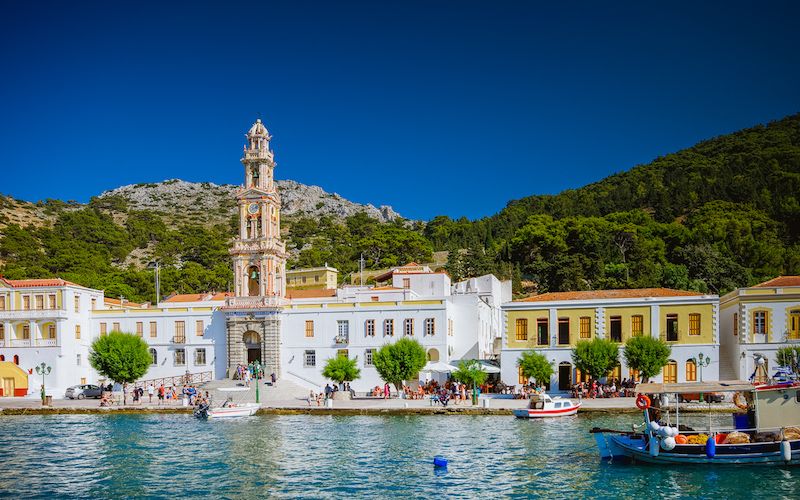
Image by Daniska from Flickr
The monastery of Symi is a beautiful and historic site located in Greece. It is a place of great cultural and religious significance and is visited by many people worldwide. The monastery is known for its stunning architecture. Here, the Monastery houses one of the largest effigies of the Archangel in the world, three meters high.
Stella Maris Monastery (Haifa, Israel)
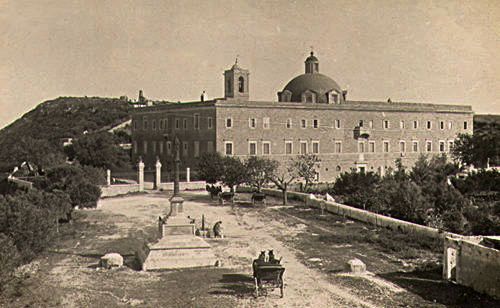
The "tip" of the sword rests in the Holy Land, not in Jerusalem, but in Haifa, the site of the Stella Maris (Our Lady Star of the Sea) monastery on Mount Carmel. This is the same place where the prophet Elias resided, who, like St. Michael, wielded his sword against the enemies of God. So is it any surprise that the spiritual children of this prophet, the Carmelites, live in the same spot as their father once did?
The first Carmelite community on Mount Carmel dates back to the time of the Crusades when European pilgrims decided to emulate the life of Saint Elias, who they considered the first monastic. But their desire to live in isolation and prayer was shattered by the conflict between the Christian West and the Islamic East.
The Carmelites were driven out of the mountain by Saracens in 1291. Four centuries later, the discalced branch of the order returned to Mount Carmel under the guidance of Venerable Fr. Prosper. Unfortunately, only 130 years after rebuilding their community, they were again expelled by Muslims who destroyed the Monastery. Undeterred by their setbacks, the holy monks moved their location closer to the mountain cave of Saint Elias, this time building over the ruins of a Byzantine chapel.
In a subsequent conflict, Muslim forces massacred all the friars at the shrine, dismantled the Monastery, and used its stones to build a summer palace.
The current Monastery, a minor basilica, was built in 1836. Today it is still home to a Carmelite community.
